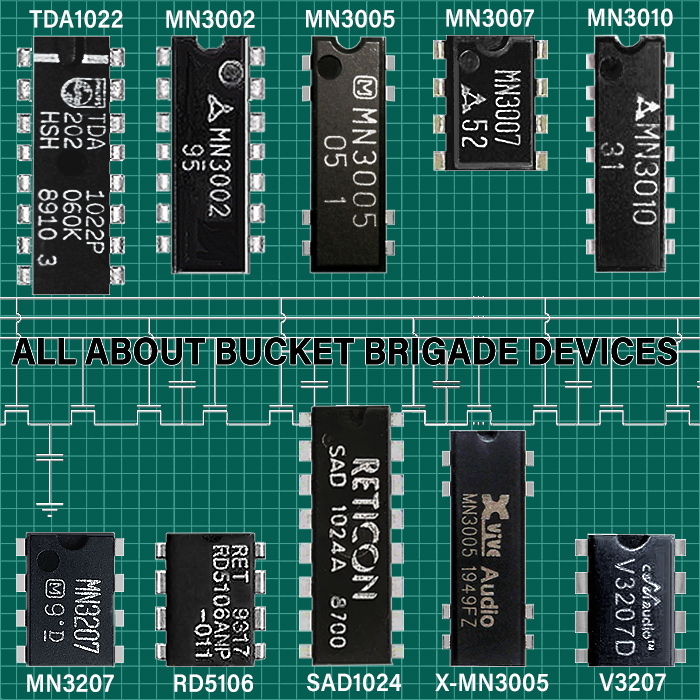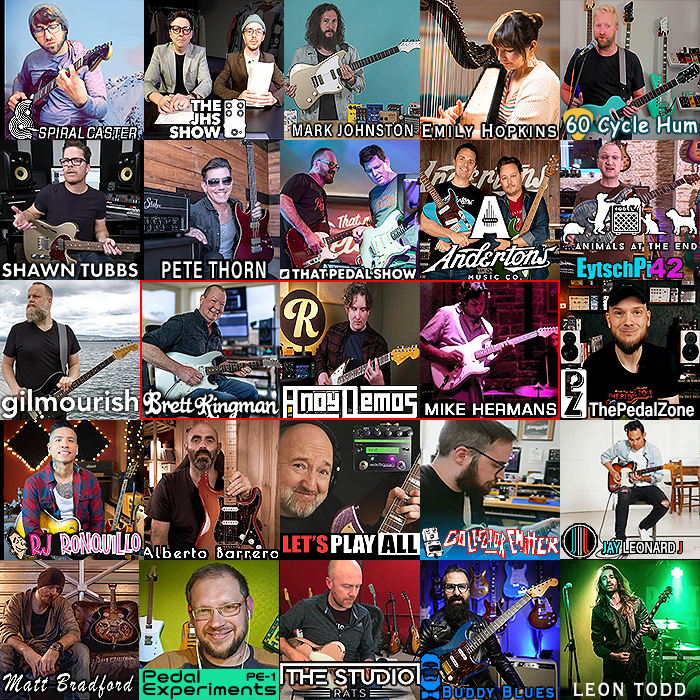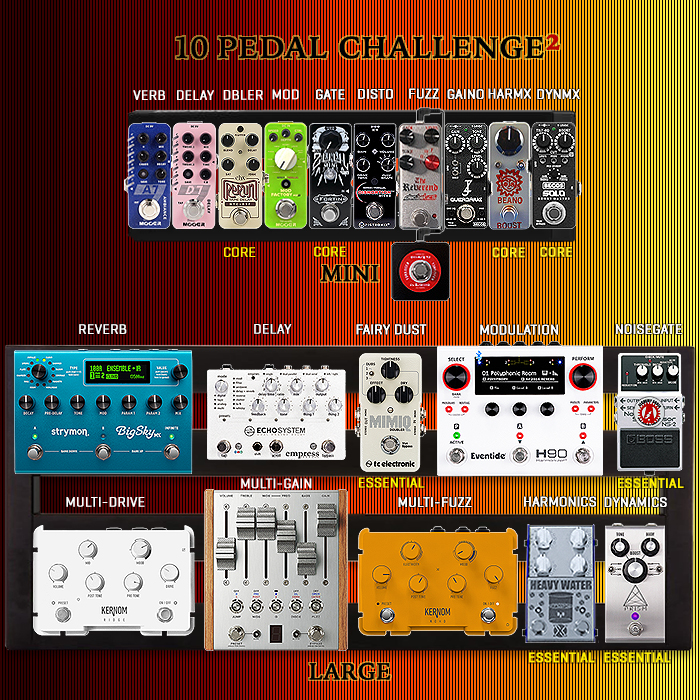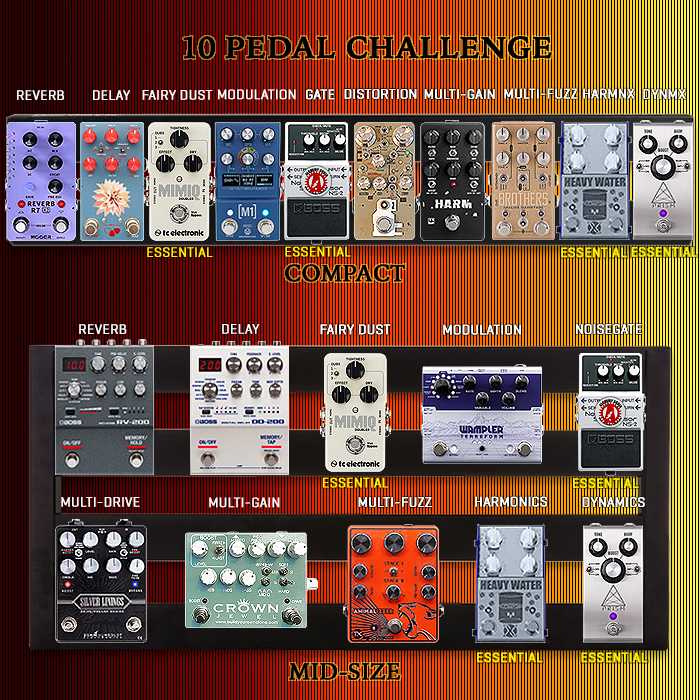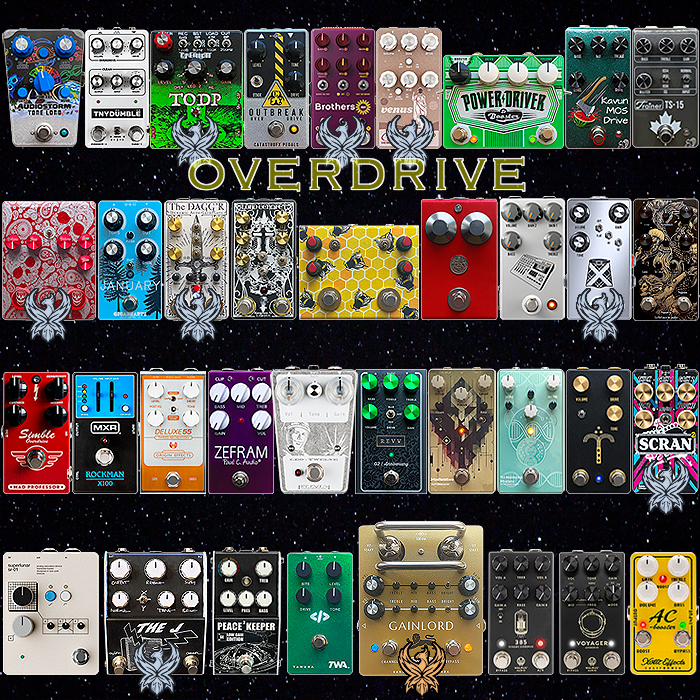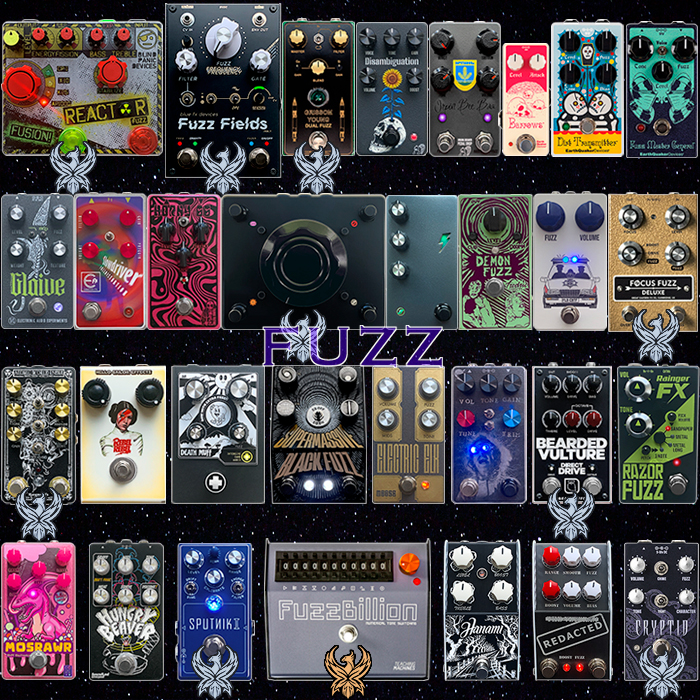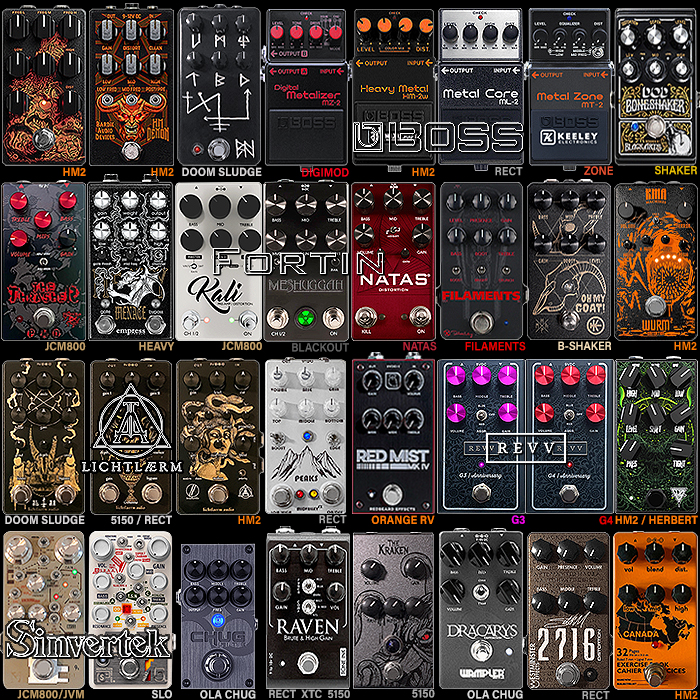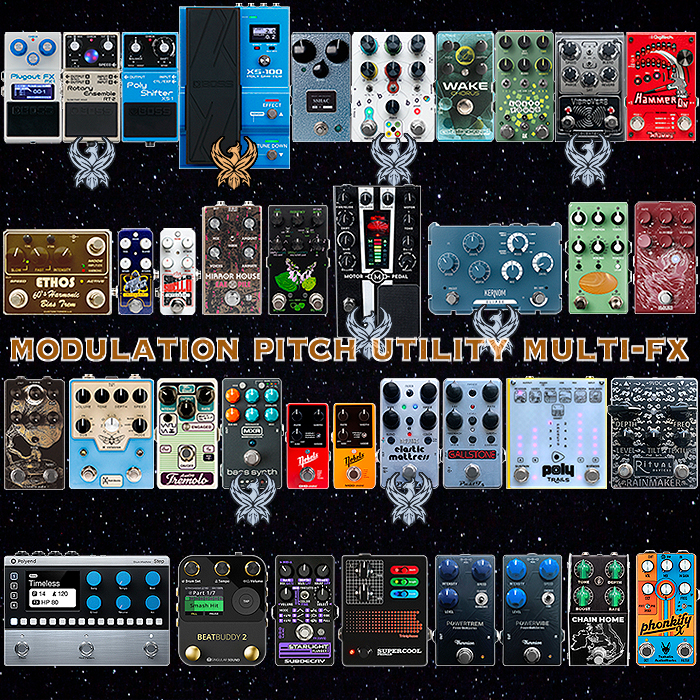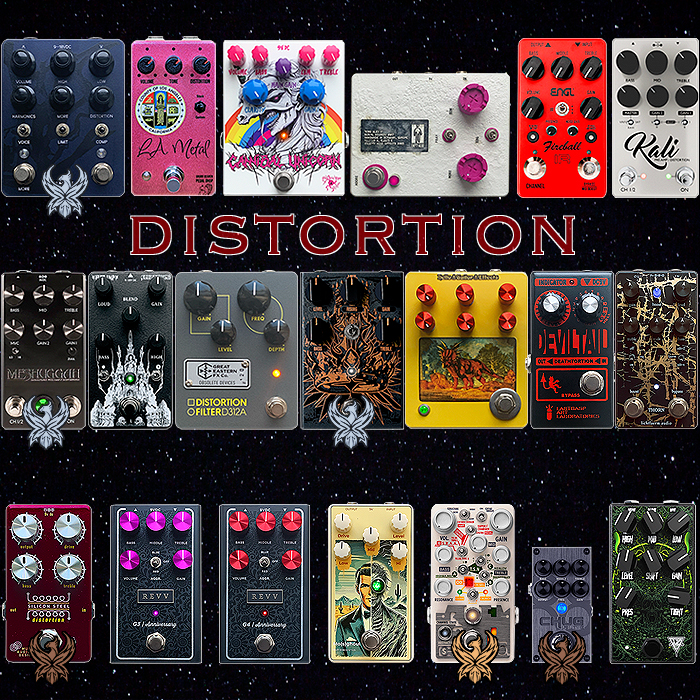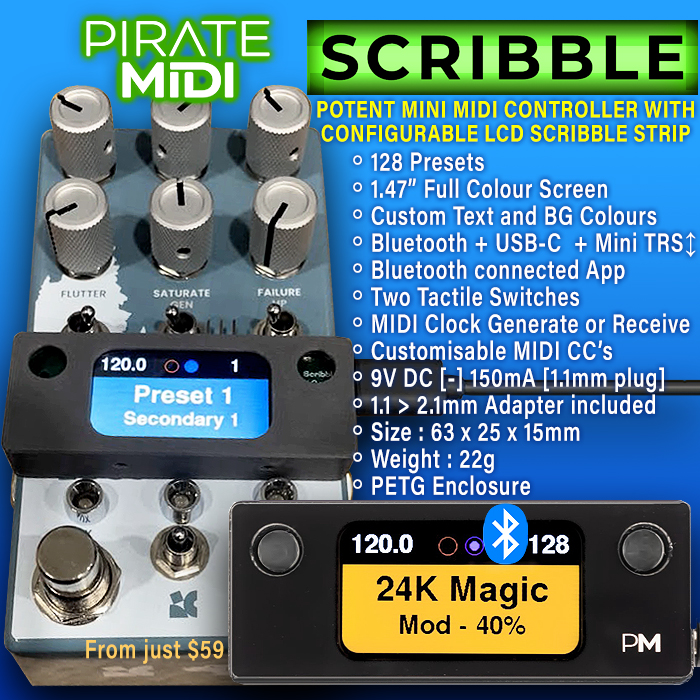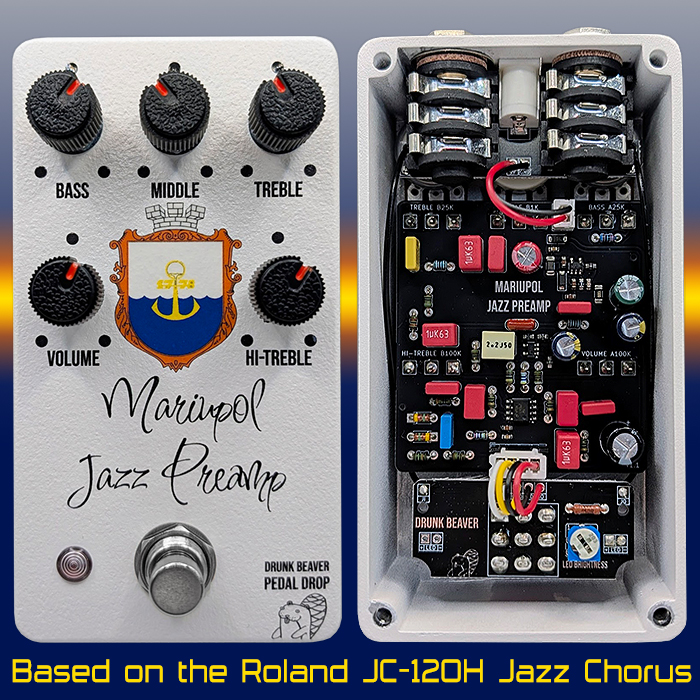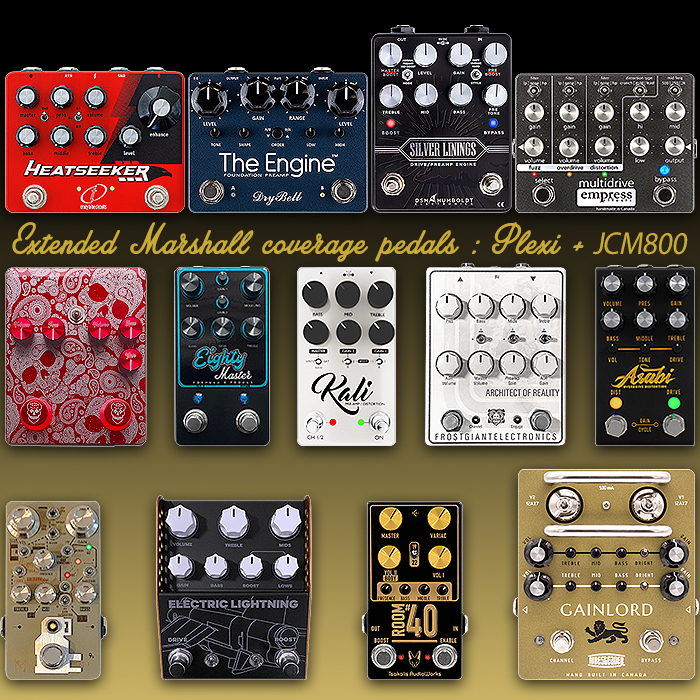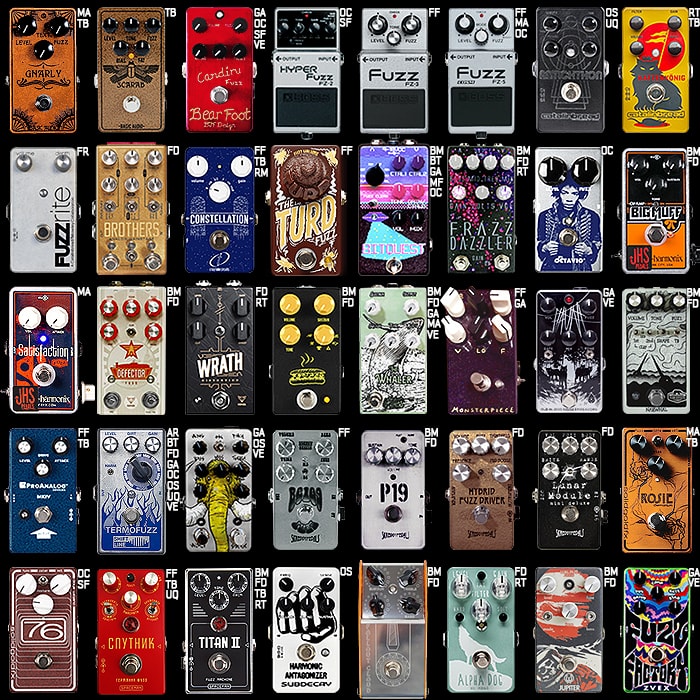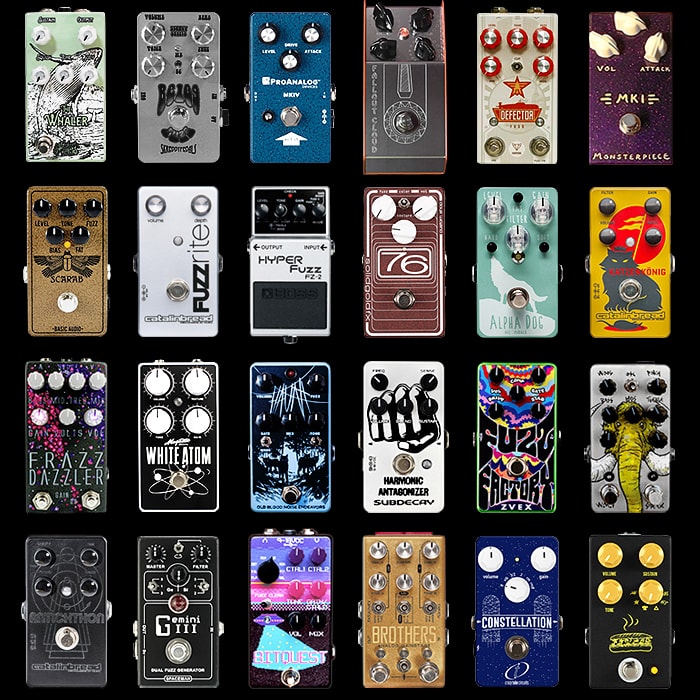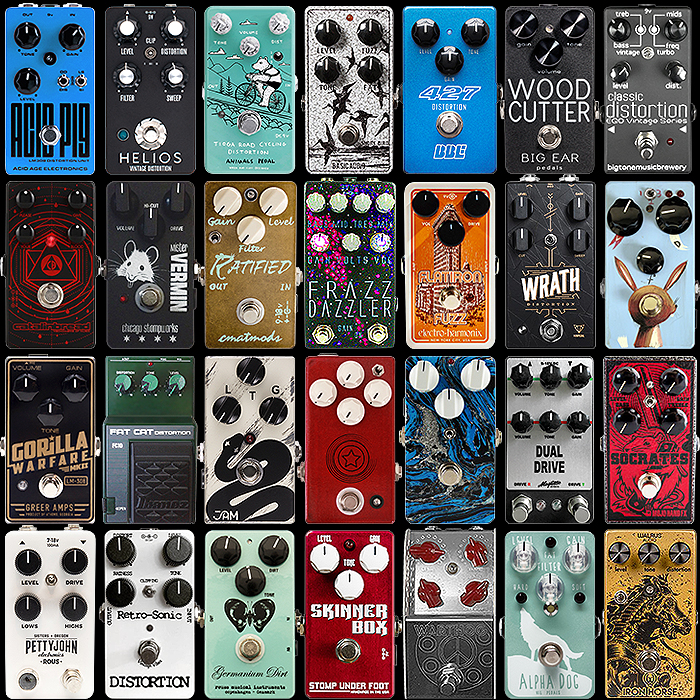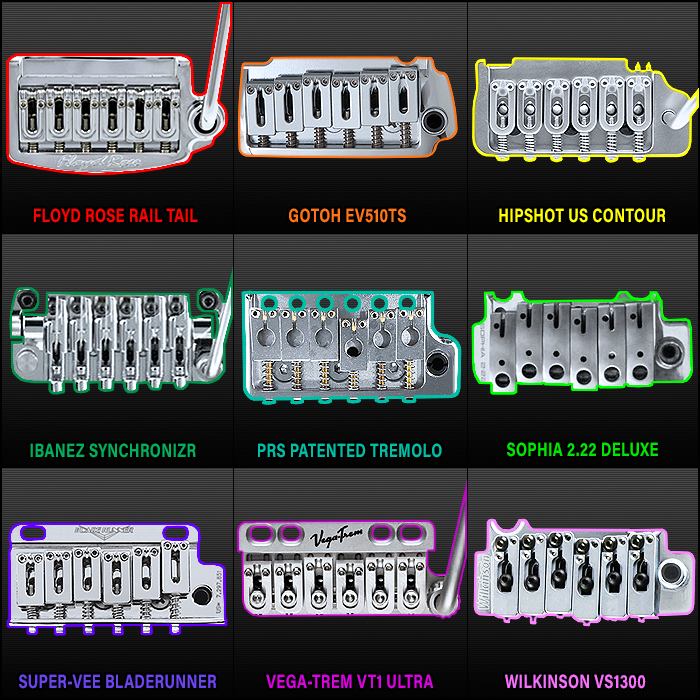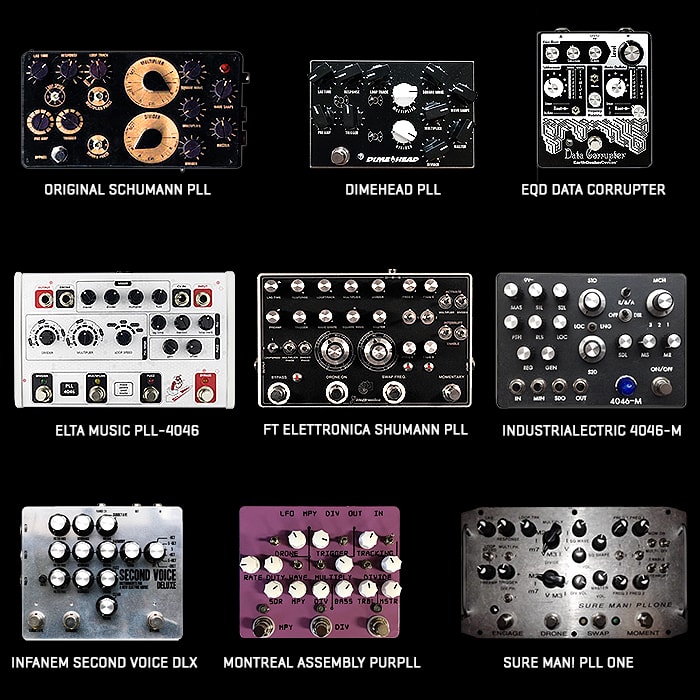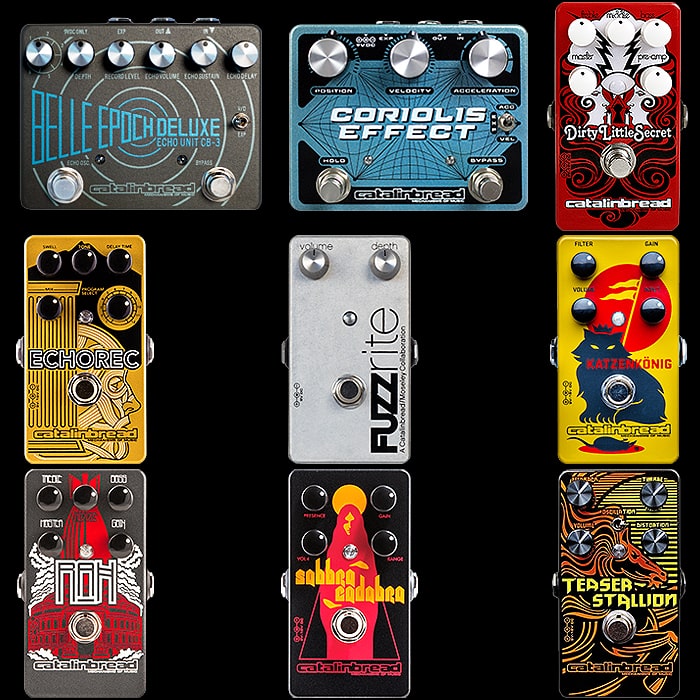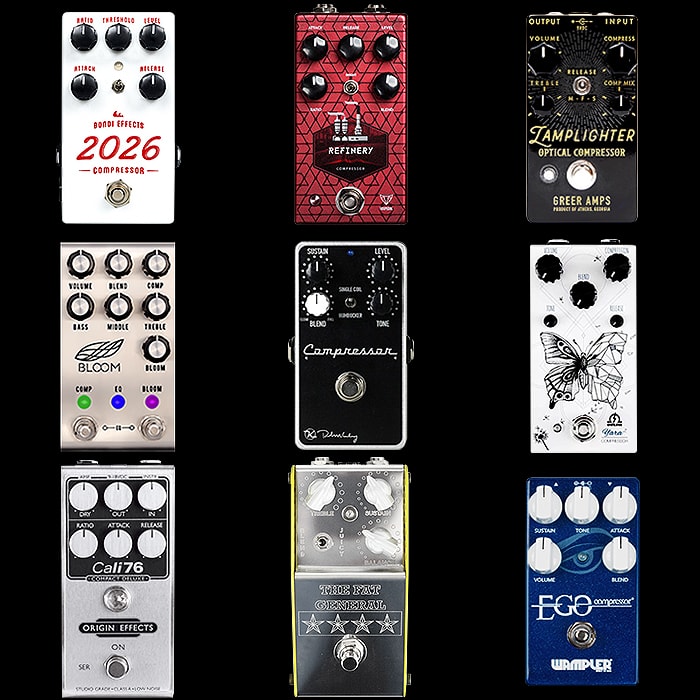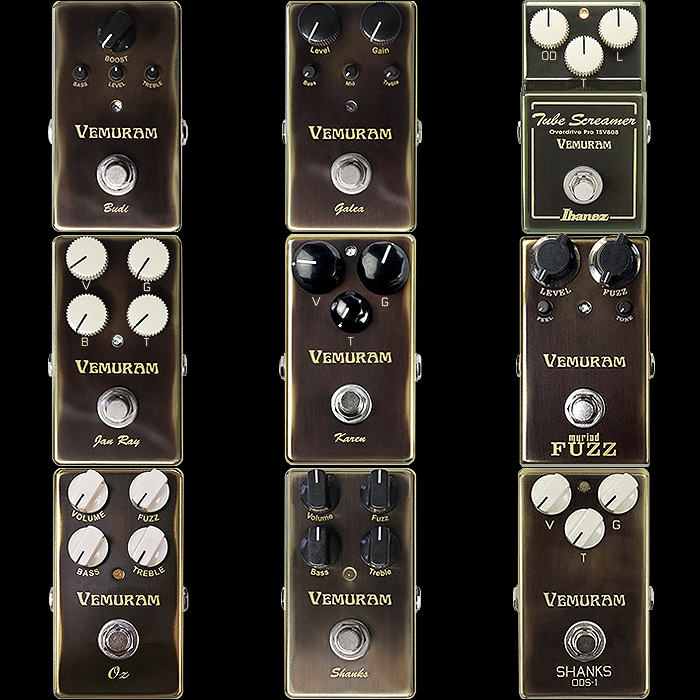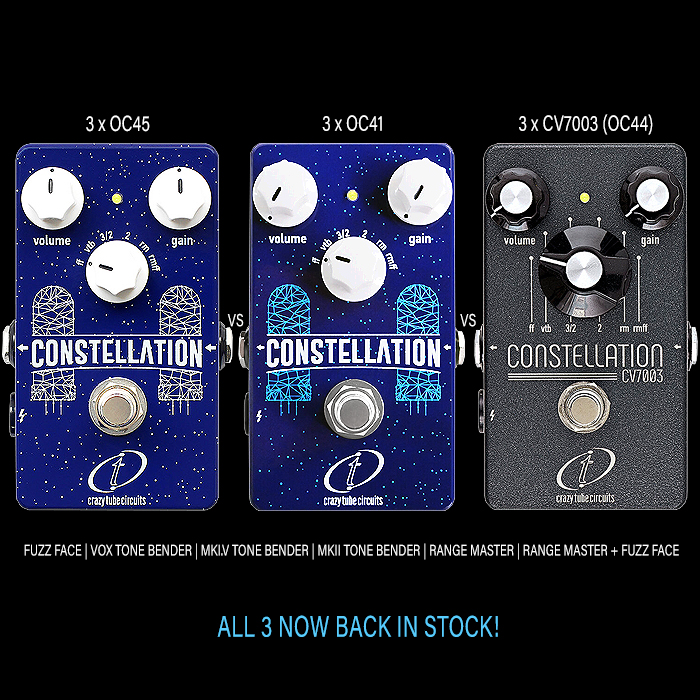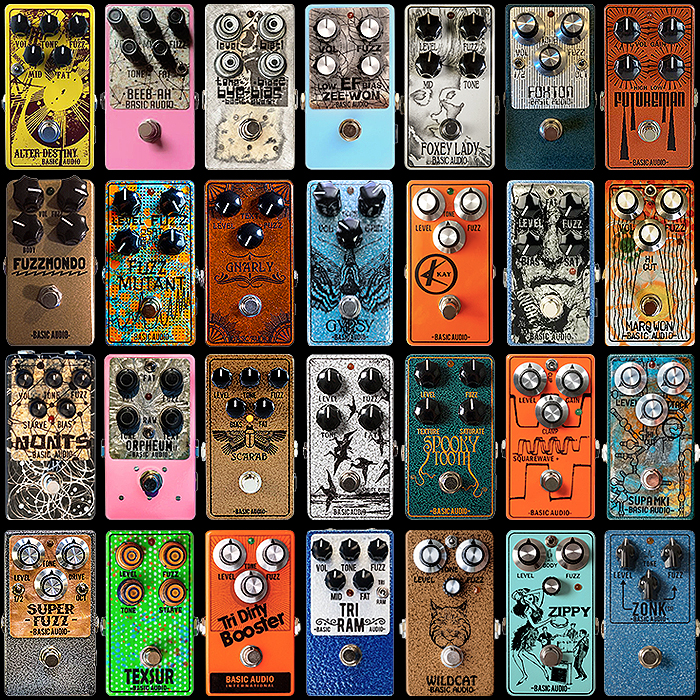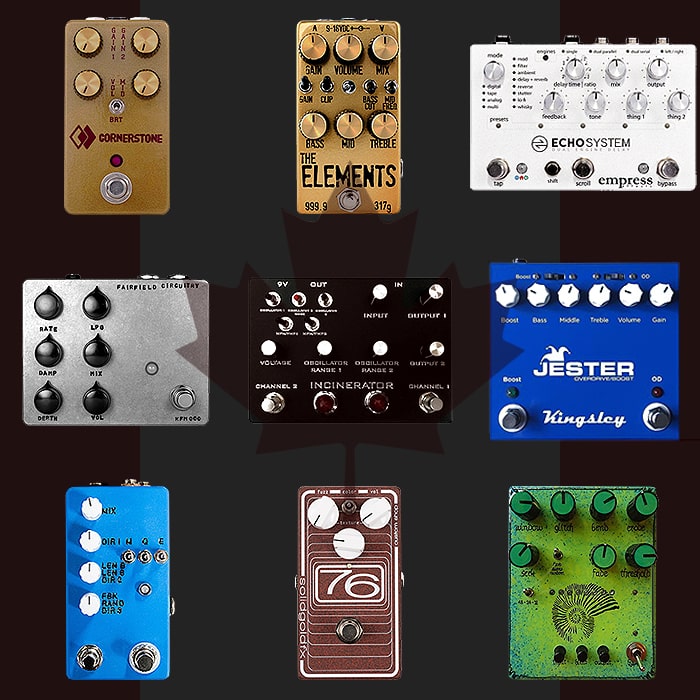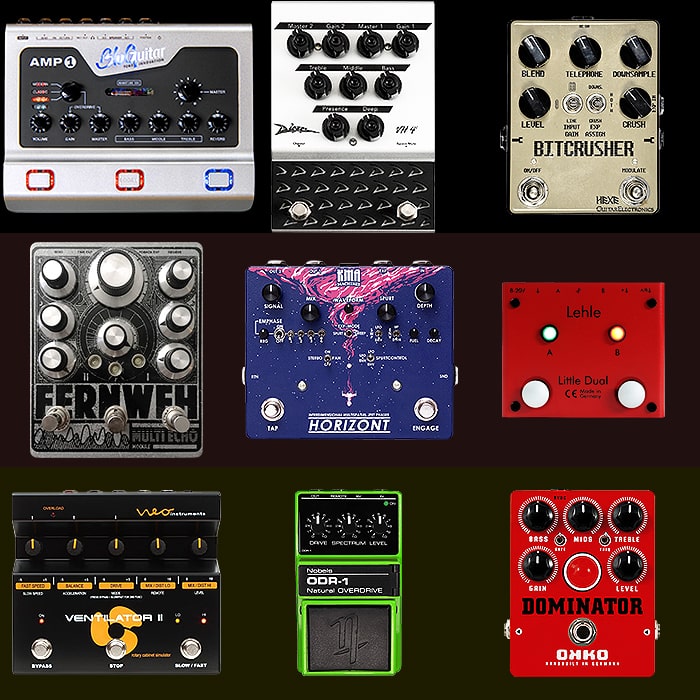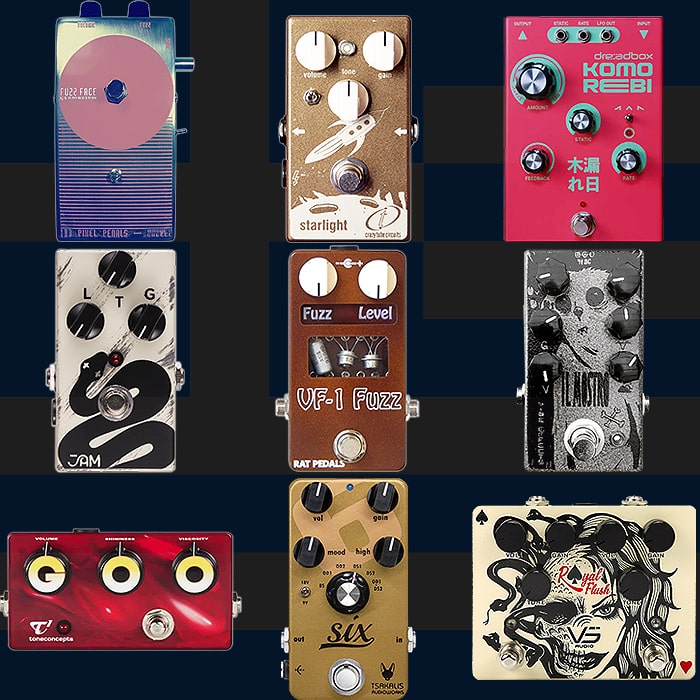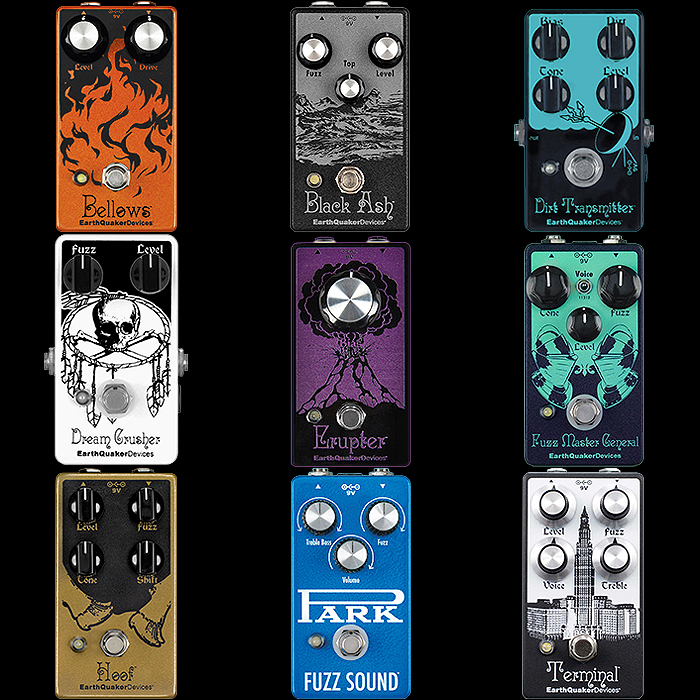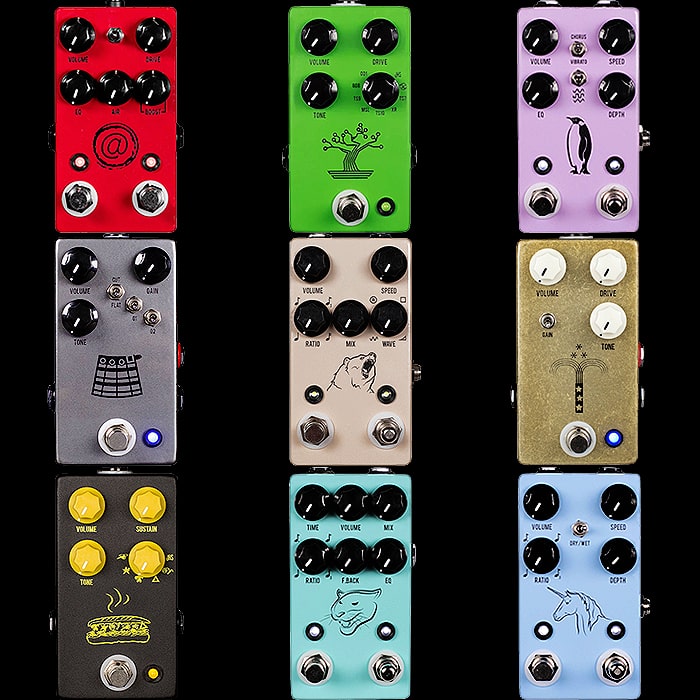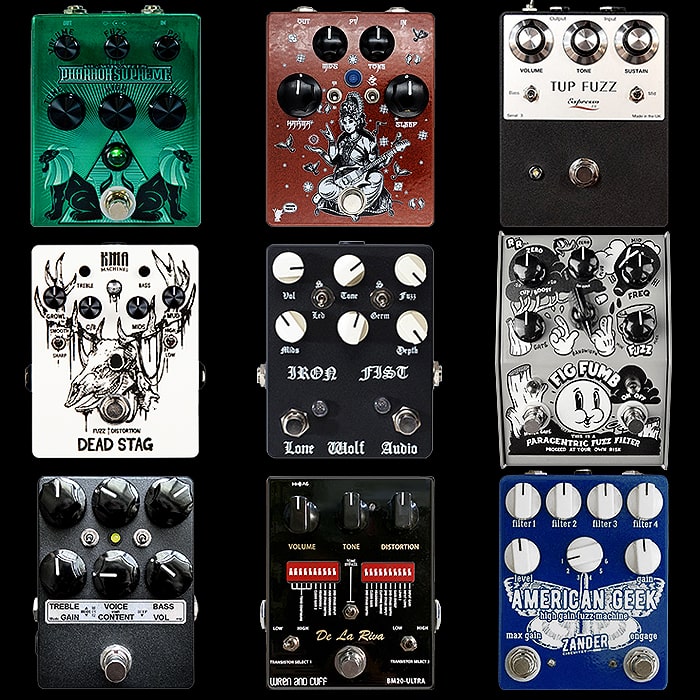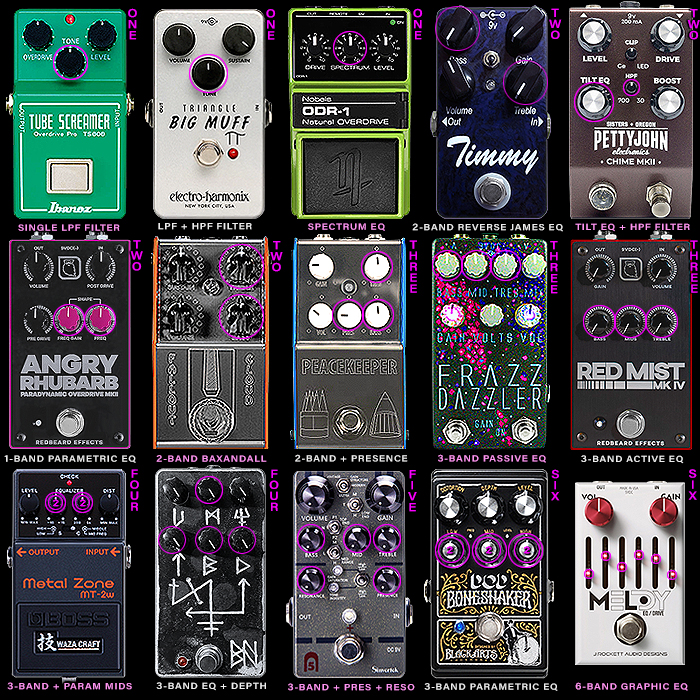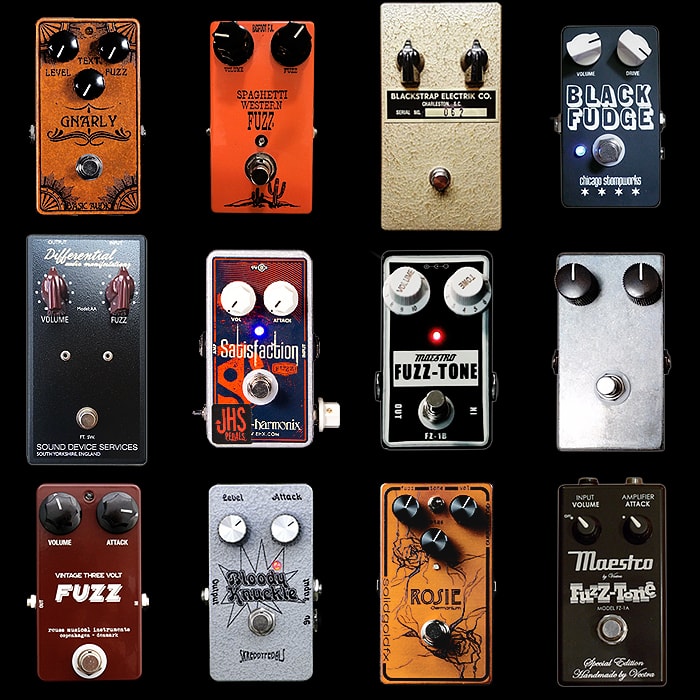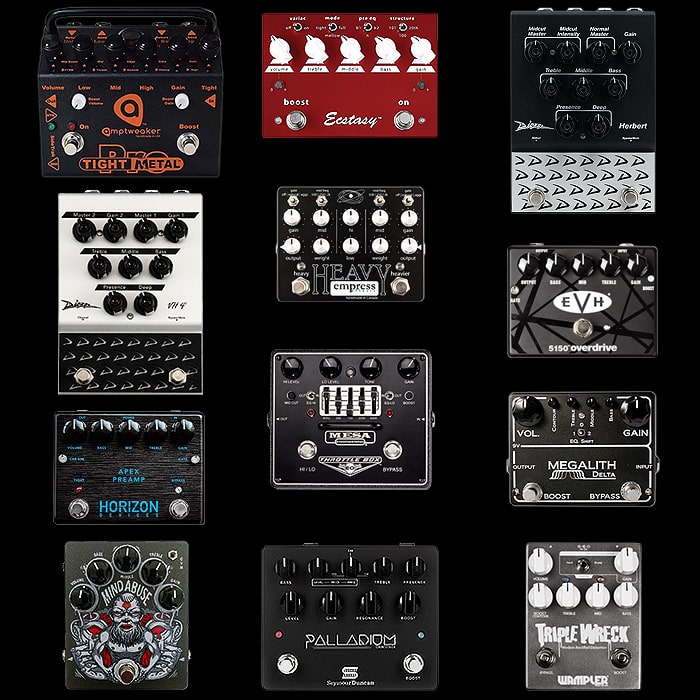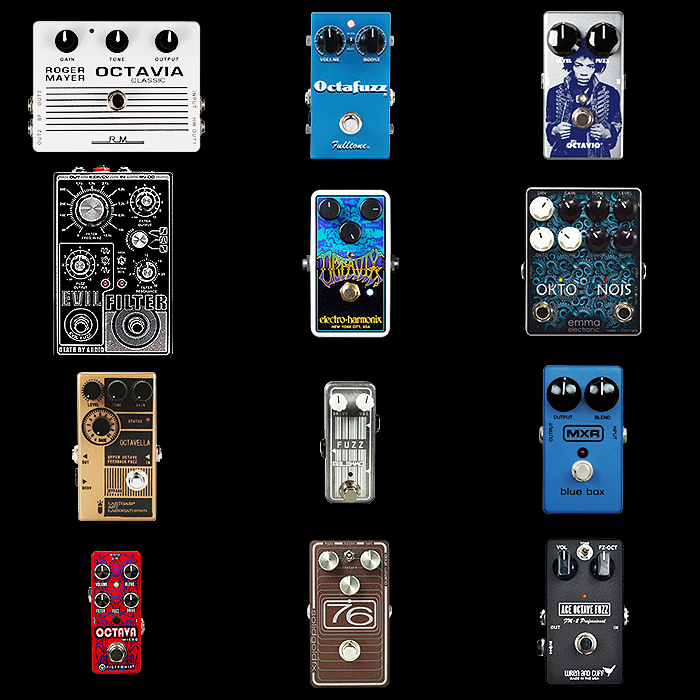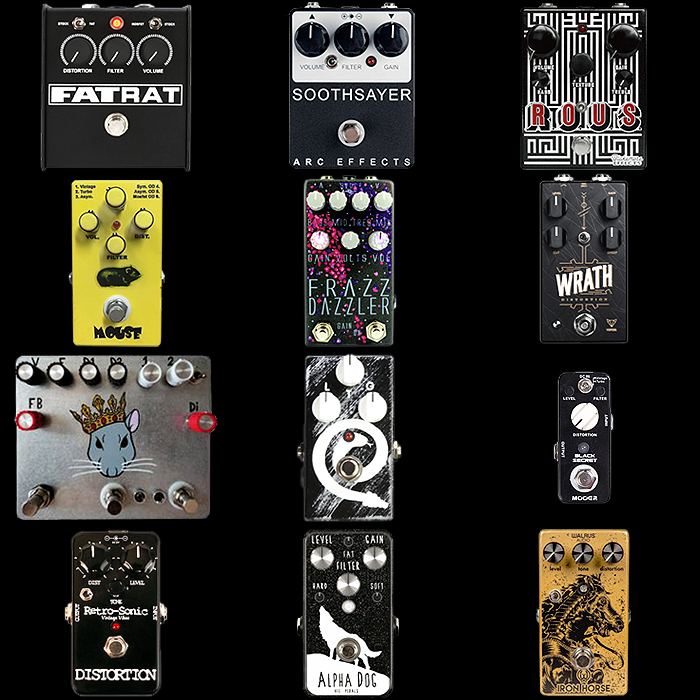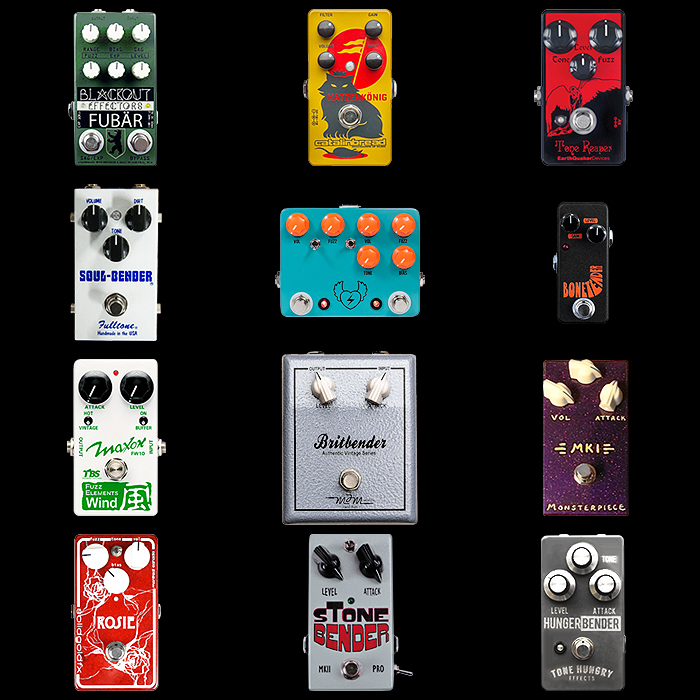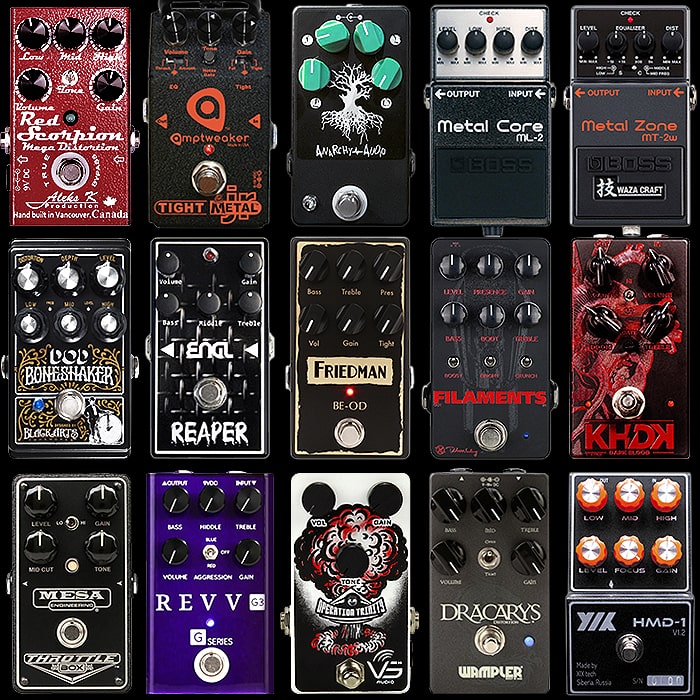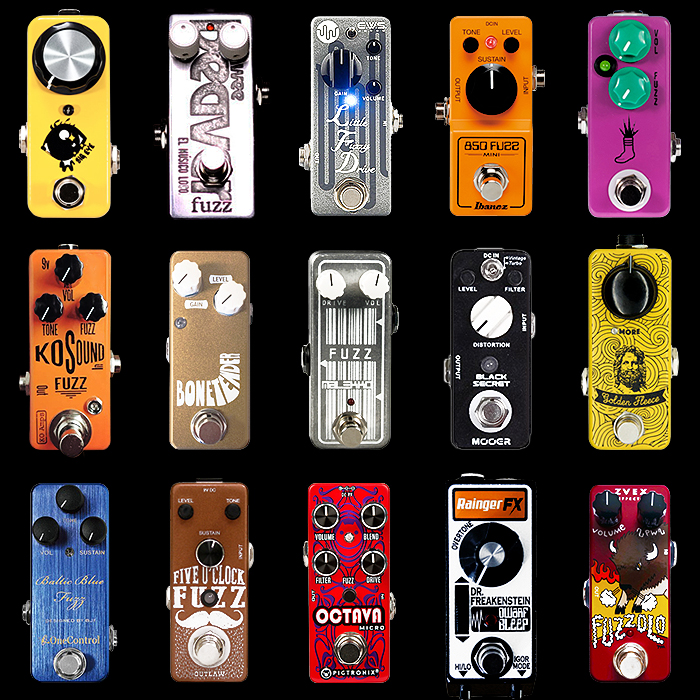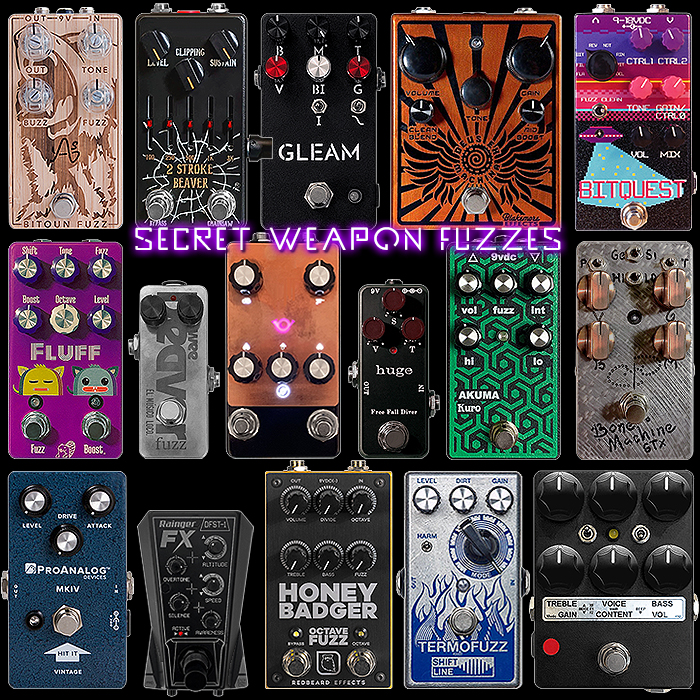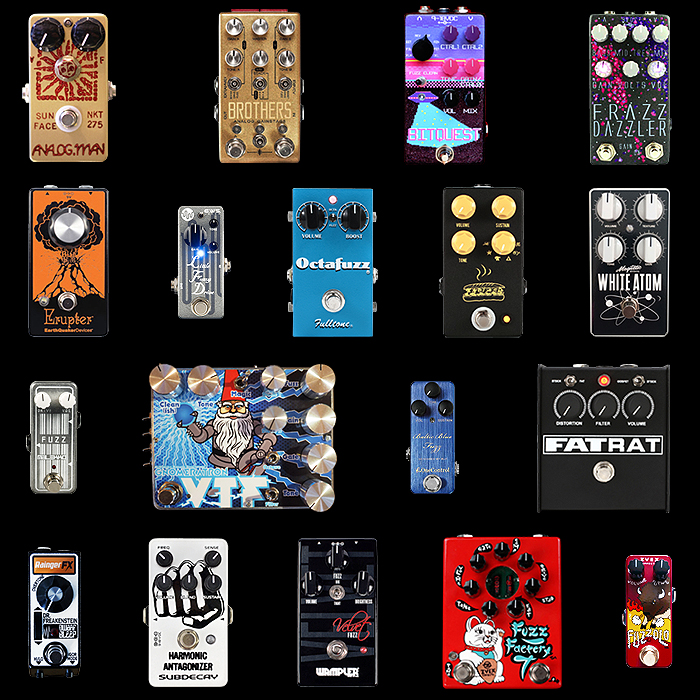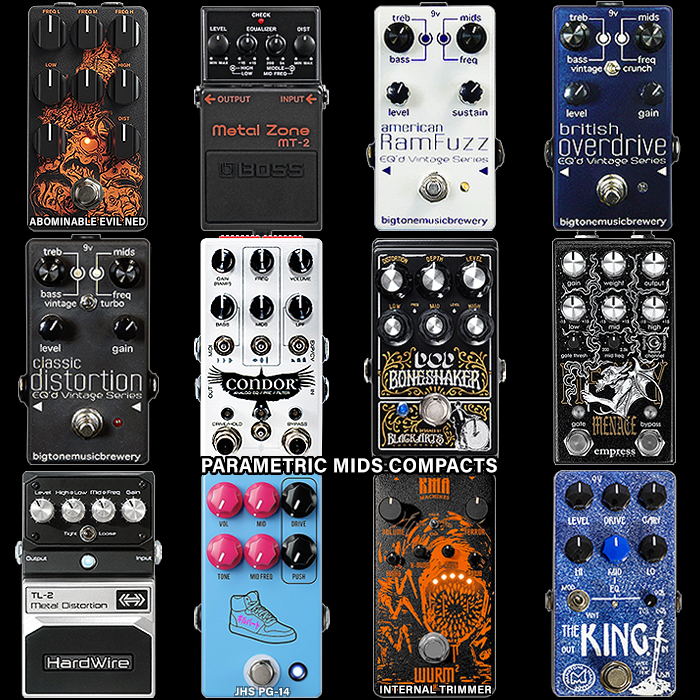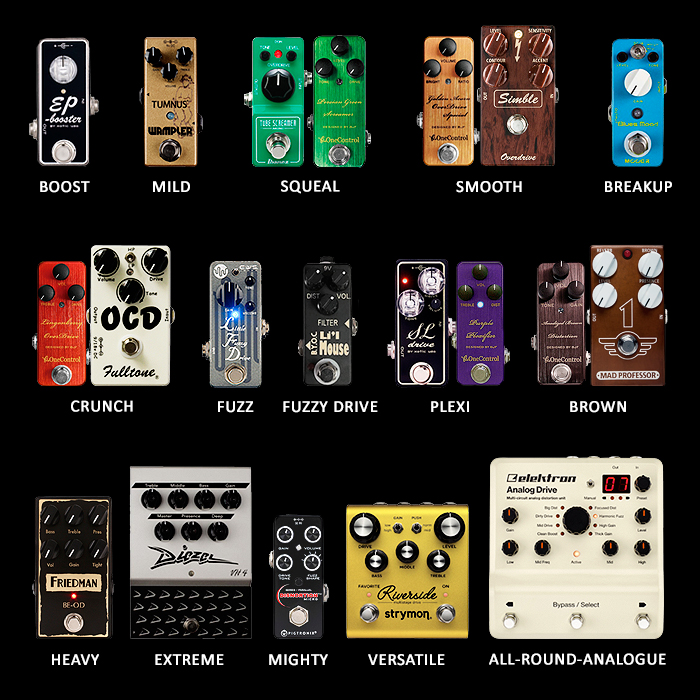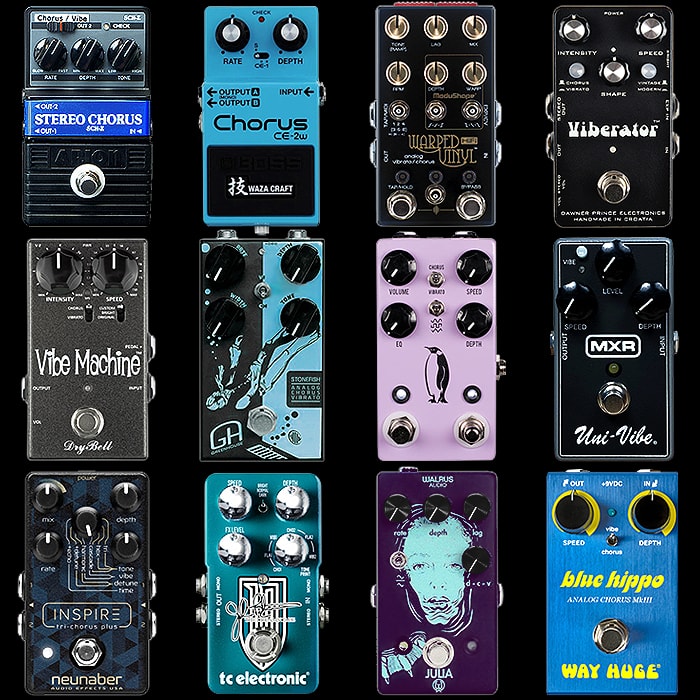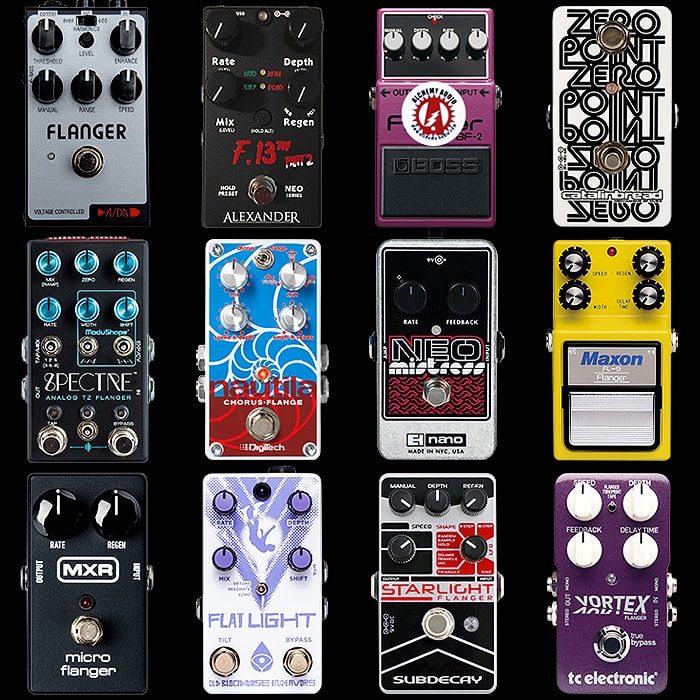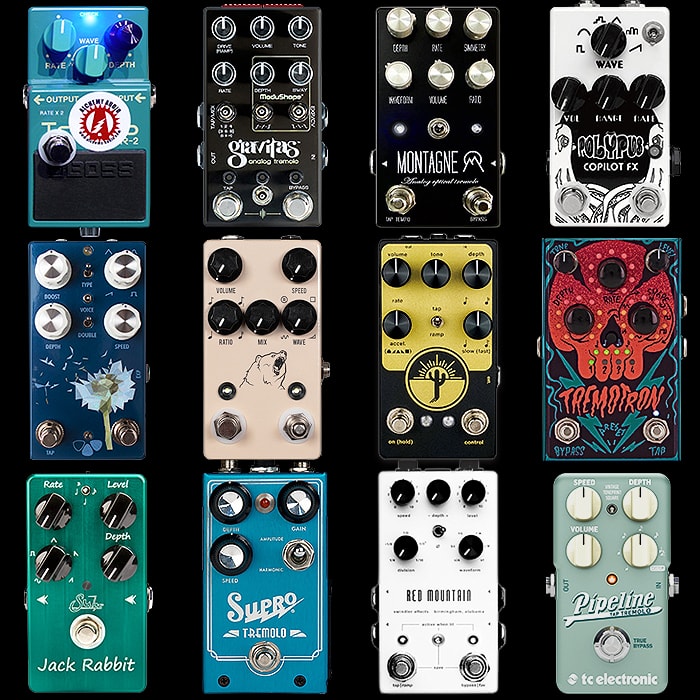Guitar Pedal Tone Controls - an Overview

Let me start by saying that I’m not an electronic engineer, and I will leave it to the likes of Brian Wampler to explain the circuit design whys and wherefores of resistors, transistors and capacitors. I am however a pedal aficionado and have direct experience of a great many of those - and this article is based on that.
I would encourage you to read my companion piece on ’Electric Guitar EQ’ first as that relates directly to this article, and serves as a decent run in. In fact said article was initially the introduction to this, but I felt it merited stand-alone status.
I am currently still very much in ’Fuzz’ mode (hashtag ’2018 Year of Fuzz’), so I have used a number of Fuzz pedals to try to illustrate different types of Tone controls and how they’re applied - but it only covers a subset of ’Passive’ really. As far as I’m concerned there are 3 different types of core tone control circuits - Passive, Active and Parametric.
Passive Tone Control
This is usually achieved by one or more frequency filters / tapers / shelving controls. The most common is the single pot design - which is really just a sort of High Pass Filter. A passive tone control can only cut frequencies - which means that when fully applied clockwise you have 0 cut - therefore in the case of a HPF filter = maximum treble and lesser degrees of that.
Active Tone Control
With an active control you can boost as well as cut a certain frequency cluster based around a key frequency value Centre Frequency. While for Passive Tone Controls the 12 o’clock position indicates circa 50%, for Active Tone Control 12 o’clock indicates ’0’ ? Inactive or Flat setting. Active Tone Controls usually have a significant impact on the volume of a pedal.
Parametric Active Tone Control
This adds a couple of additional dials typically - Boost/Cut and Q/Bandwidth to Centre Frequency Control. You can normally move the centre frequency value within a predefined range, and then control the width of that frequency range either side of the centre frequency. Parametric Control gives you by far the largest degree of range and finesse in Frequency / Tone Control and can totally change the core output tone of a pedal.
In my above example I feature a series of Fuzz pedals which range from single dial on the EQD Erupter to 7 dials on the Frazz Dazzler. Many Fuzz Pedals call the ’Gain’ component ’Fuzz’ or ’Depth’ or ’Saturation’ or ’Attack’ even. On certain Fuzzes you will see Tone controls called ’Bias’ or ’Filter’ or ’Voice’ or ’Contour’ - and then we also have just the very basic ’Tone’, or ’Treble’ and ’Bass’.
Most of the early Fuzz pedals had just 2 dials on them - Volume/Level and Fuzz/Gain/Dirt/Depth - or Output Level and Degree of Gain. Latterly they evolved to additional Tone or Bias pots, and then much later they adopted the ’Treble’ and ’Bass’ more typically associated with Overdrives - and then finally and rarely - the classic Marshall-style 3-Band EQ of Treble, Mids and Bass.
I cover off 9 increasing degrees of Tone Control in the above visual, and then touch on one more (not pictured) - in the guise of the EHX Graphic Fuzz - which goes a couple of steps further - with a 6-Band EQ.
Earthquaker Devices Erupter - No Tone Control, Single Dial
Here the tone-shaping of the fuzz is really just wrapped into a combined Volume and Gain Single Dial which just adds More Noise essentially, but does not give you separate control over Tone.
Catalinbread Moseley Fuzzrite - No Tone Control, Twin Dials with Depth Control
A very faithful remake of the original Moseley Fuzzrite pedal with the original twin controls of Volume and Depth - where Depth is really degree of Fuzz or Gain. Again no independent Tone Control to shape the Tone of this pedal.
Crazy Tube Circuits - No Tone Control, Multi-Voice Selector
This pedal has the classic early Fuzz twin controls, but has 6 different analogue voicings - with each of the Fuzz Face, Tone Bender and Rangemaster voices being distinct tonal profiles in and of themselves. So you could argue to a degree that the ’Tone Shaping’ is achieved via selecting different voicings here.
Shift Line Termofuzz - No Tone Control, Multi-Mode Pedal with Variable Dirt Control
No dedicated Tone Control as such, but a liquid 12-position Mode dial with additional ’Dirt’ control which is applied variously depending on Mode selected. In some instances this does in fact adjust tonal parameters, but the same dial does several different things dependent on Mode - so cannot be properly considered as a Tone Control, even though there is a significant degree of ’Tone-Shaping’ within this pedal - and especially too with interaction of your guitar’s volume and tone controls.
JHS Muffuletta - Single Tone Dial, Multi-Voice Selector with Sustain / Gain Control
This is essentially the same sort of Pedal as the CTC Constellation, but with the addition of a passive single taper-style Tone Control.
Vemuram Oz - 2-Band EQ with separate Bass and Treble Controls
The Vemuram Oz is basically a fine-tuned version of the Shanks 4K - with slightly different transistors for a greater range of Gain, while improving the signal-to-noise ratio at the same time. The pedal features the classic Overdrive 2-Band EQ controls in the form of High Pass and Low Pass filters - or Treble and Bass.
Suhr Rufus - 2-Band EQ+, Bass and Mids, with Toggle Switch for Treble
Suhr calls this a 3-Band EQ, while I feel it’s more like a 2.5 or a 2+, as the Treble filter here is served by a 3-way Toggle Switch rather than full-range dial. This pedal has a further smart internal trick where you can switch between Normal and Fat voicing by holding down the footswitch for a couple of seconds.
Basic Audio Scarab Deluxe - Hybrid Tone Controls combining Tone, Bias and Fat
The Scarab has some really unique and interesting Tone Controls via Tone, Bias and Fat. Where the Bias tunes the output bias of the Transistors so a Voicing control as such, and ’Fat’ in this instance sort of boosts the lower frequencies. So by using those 3 controls together you get a pretty wide range of output tones.
Dr Scientist Frazz Dazzler - 3-Band EQ with Bass, Mids and Treble
So this pedal has a plethora of controls, including the classic Marhshall-style 3-Band Tone Stack. These are probably my favourite type of tone-controls, particularly in their activie variety, and you can really tune your pedal as well as get more versatility out of it. Stone Deaf Effects does a number of pedals with Parametric Mid Frequency controls which is cool, but not essential for me - I am largely the most satisfied with the classic active 3-Band tone stack.
Electro-Harmonix Graphic Fuzz (not pictured) - 6-Band Graphic EQ
If you want the ultimate tone-control on a Fuzz, then EHX provides you with a 6-Band Graphic Equalizer version with additional envelope filters for the ultimate in fuzz-tunability. Stone Deaf gives you Parametric mids control on its Fig Fumb Fuzz which is a decent runner-up in that category, while both are on the large-side for me, particularly the larger-format EHX.
Final Thoughts
I have the majority of the Fuzzes pictured above and each gives me something a little different. These are all great fuzzes in their own right, even though some have significantly lesser versatility and more limited tone-control. For many Fuzz pedals you don’t feel you’re missing additional controls, even though I would ideally probably like to see 3-Band Tone Controls on most, or at least a single Tone dial. Most Fuzzes interact well with a guitar’s volume and tone controls, so that needs to be taken into account too - although some guitarists like to do without a tone control - so not much fuzz for them.
As with the Erupter above, there is often much to like about simple controls. There are many classic dirt pedals with just Volume | Tone | Gain which are perfect in their own right. Yet I’m a tweaker at heart - and often want to be able to fine-tune things more to my preferences. I’m not one that takes commands easily - and usually want to do things my way - so I will always have a preferences for a pedal which allows me to get more out of it. I supposed this explains to a degree why I’ve still to get the Erupter - even though it sounds great, but snapped up pretty much all these others ones - with the Frazz Dazzler at the head of that list.
There’s lots of players out there that demand simplicity and can’t be bothered to put in the time to constantly ’Tune their Rig’. These people don’t tend to be Tone Chasers, and are usually all to quick to condemn a piece of equipment as they weren’t prepared to put in the time required to reach an optimal tone. I have around 30 compact Fuzz pedals alone now, and can draw pretty special tones out of each of them - including the Zvex Fuzz Factory. Yet there are lots of people out there who proclaim that the Fuzz Factory or the Metal Zone or this or that pedal are unplayable junk - it’s just not true. With the right application you can get most half decent pedals to sound pretty darn good. I have a variety of booster pedals in my chain, as well as a Boss GE-7 - to produce my preferred tone for the full rig. While each pedal is a microcosm of its own, and piggy-backs of that core sound, but offers its own variety and versatility.
I seem to put quite a lot of sway in versatility, as for example the best ’Dumble’ tone I every acheived was with the Mad Professor Simble, but I generally prefer to use the Wampler Euphoria, Sinvertek No.5, Bearfoot FX Model Hs, Bogner Burnley (low gain) and Ethos TWE-1 in that same slot - as each of those gives me slightly more range and a lot more versatility!
I play a huge variety of tones which covers scores of artists at different stages in their careers - I still quite like the look of the Line 6 full-fat Helix, but even as good as it is now, it’s not yet up to the quality of my 39-pedal-long pedal-chain. I typically only deploy 3 Fuzz pedals in the chain at any one time, so I have a lot of redundancy there to make up for. So by default I tend to use more versatile pedals - even though they are all different flavours - and then I slot in the specialist ones as and when I need them. In terms of Fuzz, my First slot is somewhat permanently occupied by the Chase Bliss Brothers, while the 3rd slot is owned by the Frazz Dazzler - meaning the 2nd Fuzz Slot is occupied by ever-changing pedals, most recently the ProAnalog Devices MKIV, Skreddy BC109, Basic Audio Scarab Deluxe, ThorpyFX Fallout Cloud, with the Termofuzz up next, followed by the CTC Constellation when that arrives from Greece!

